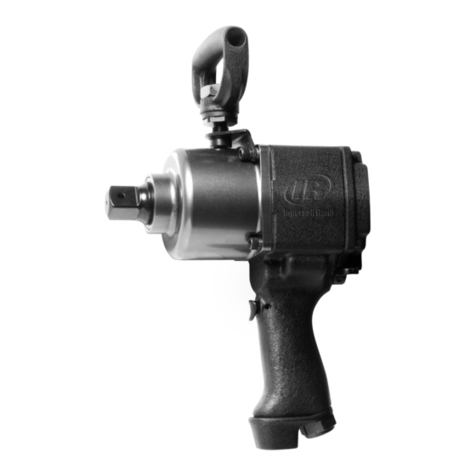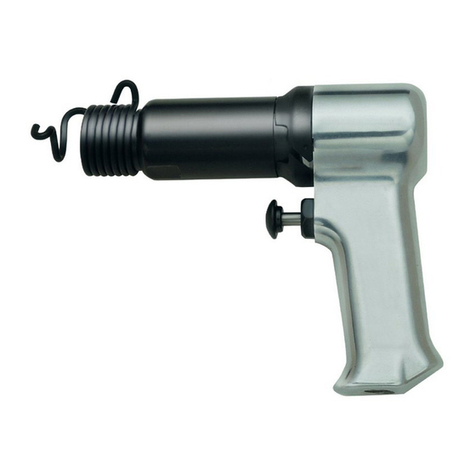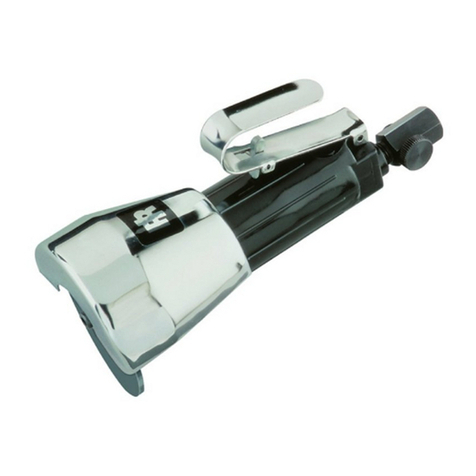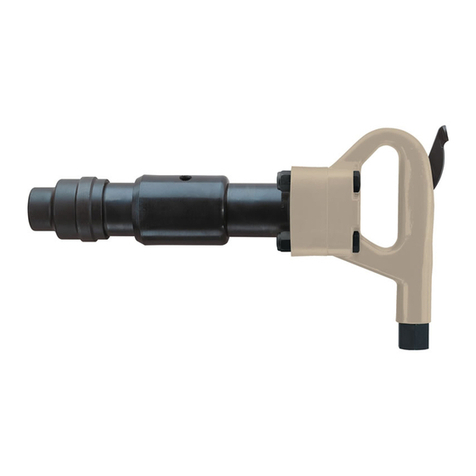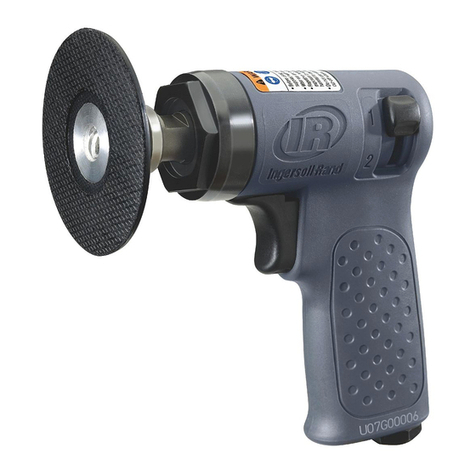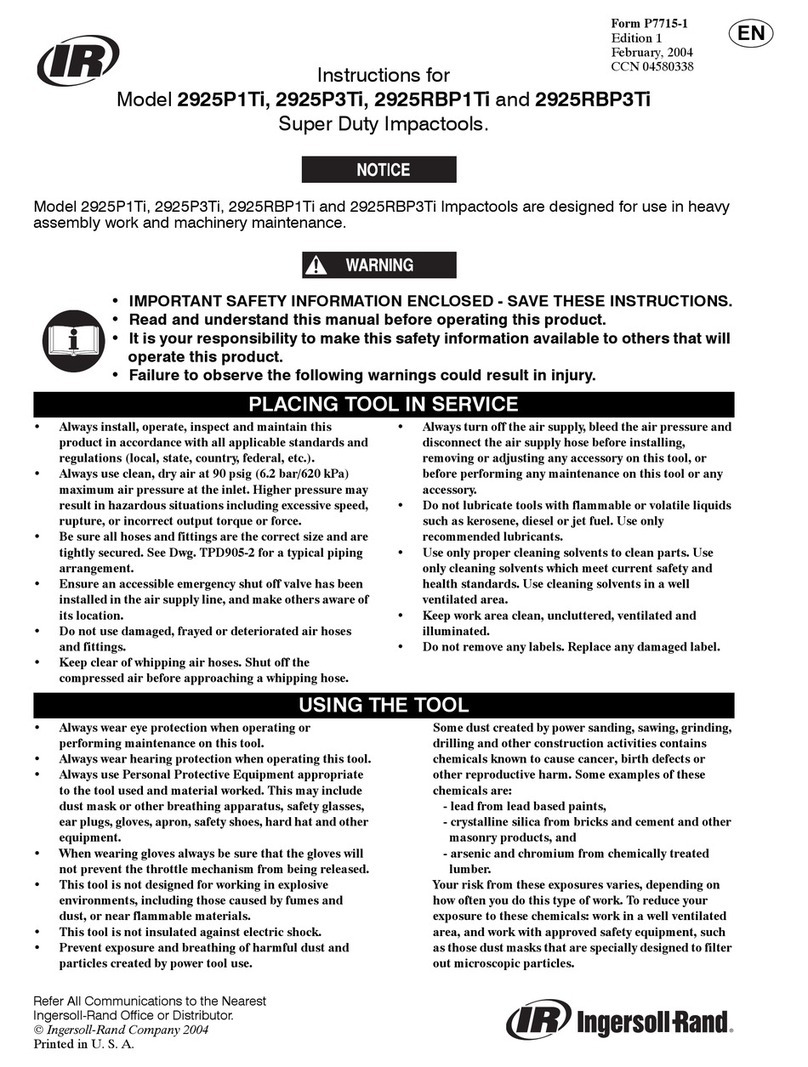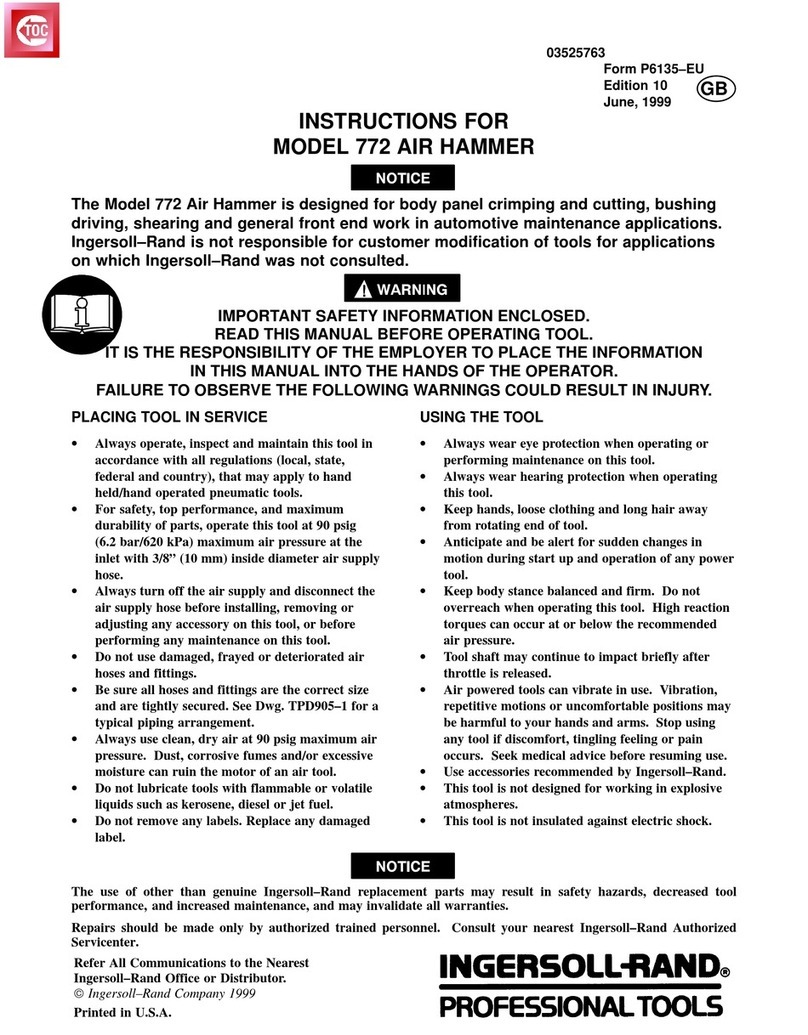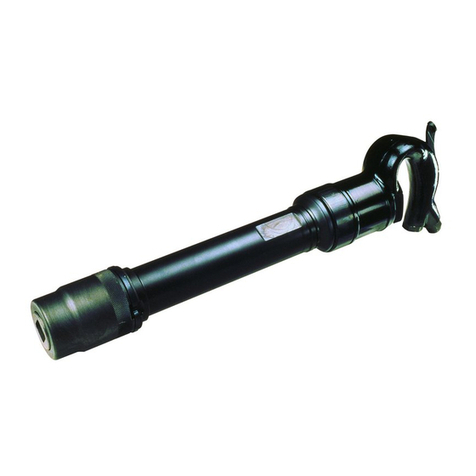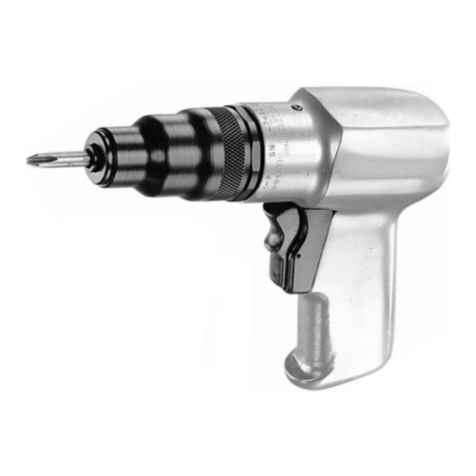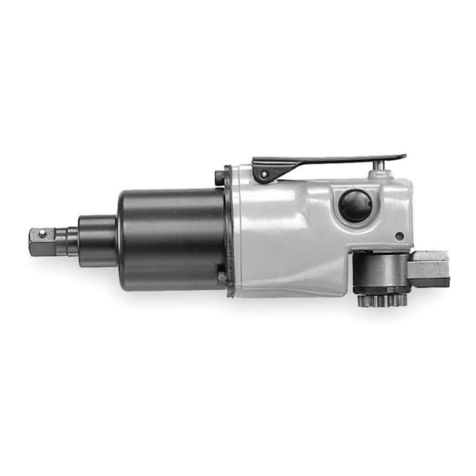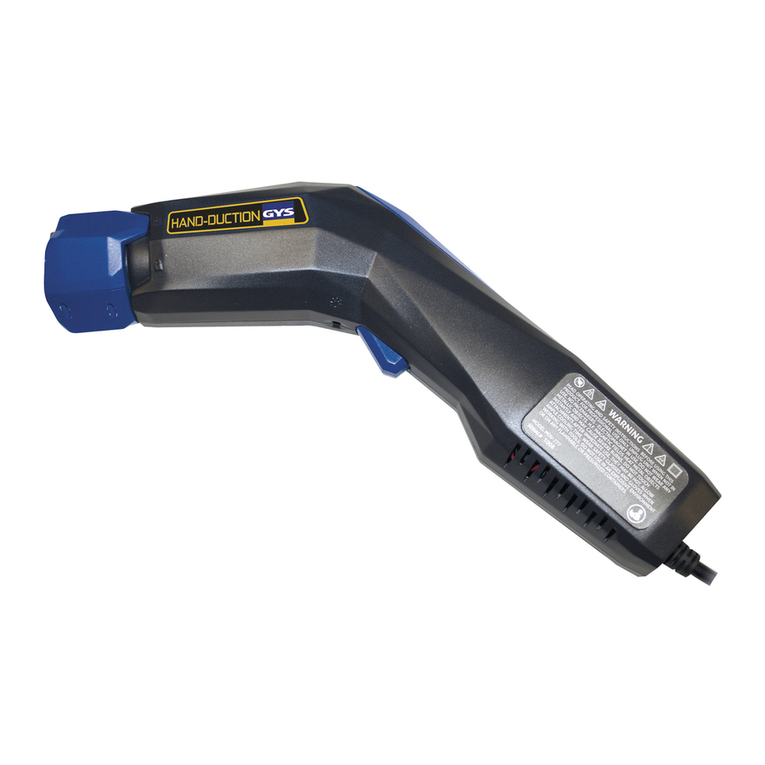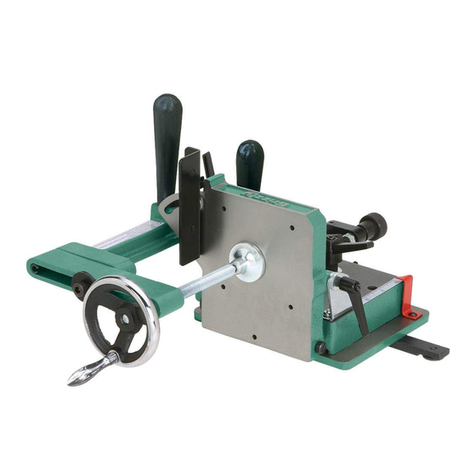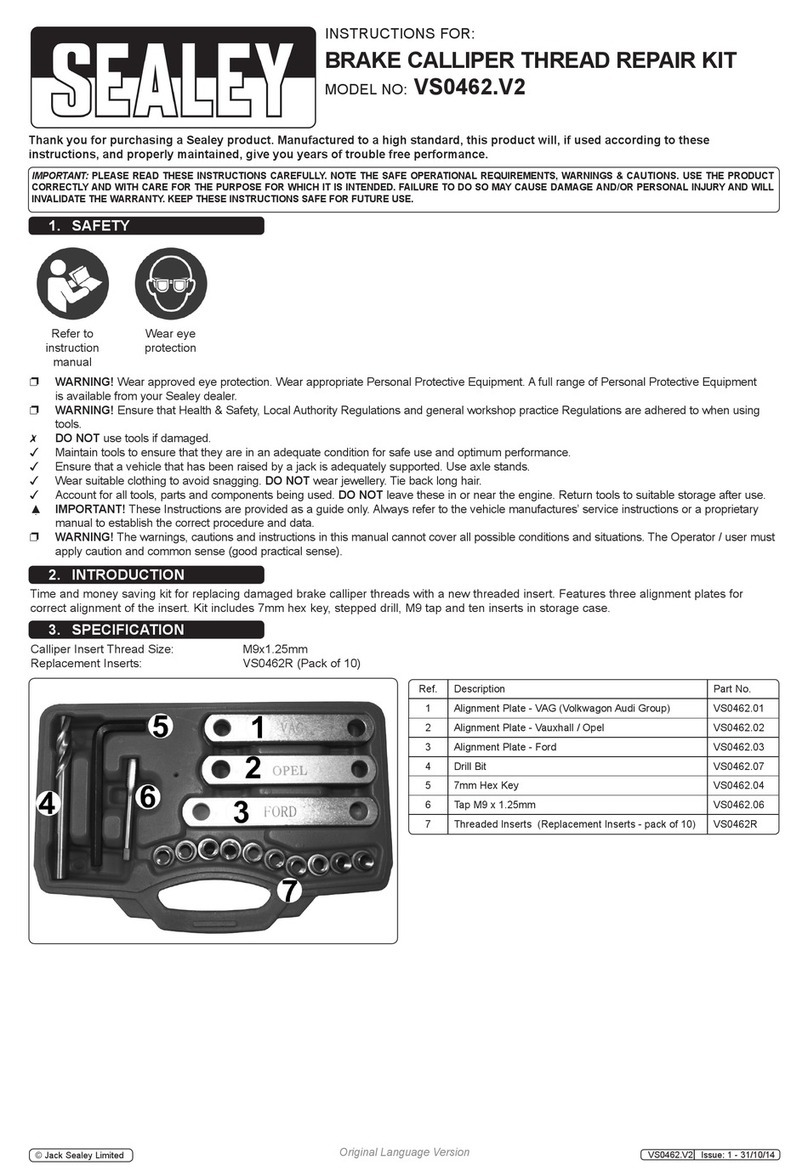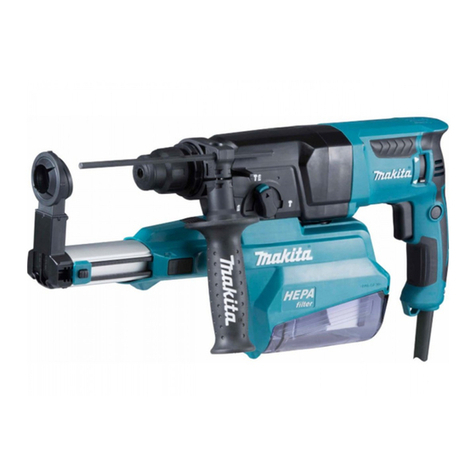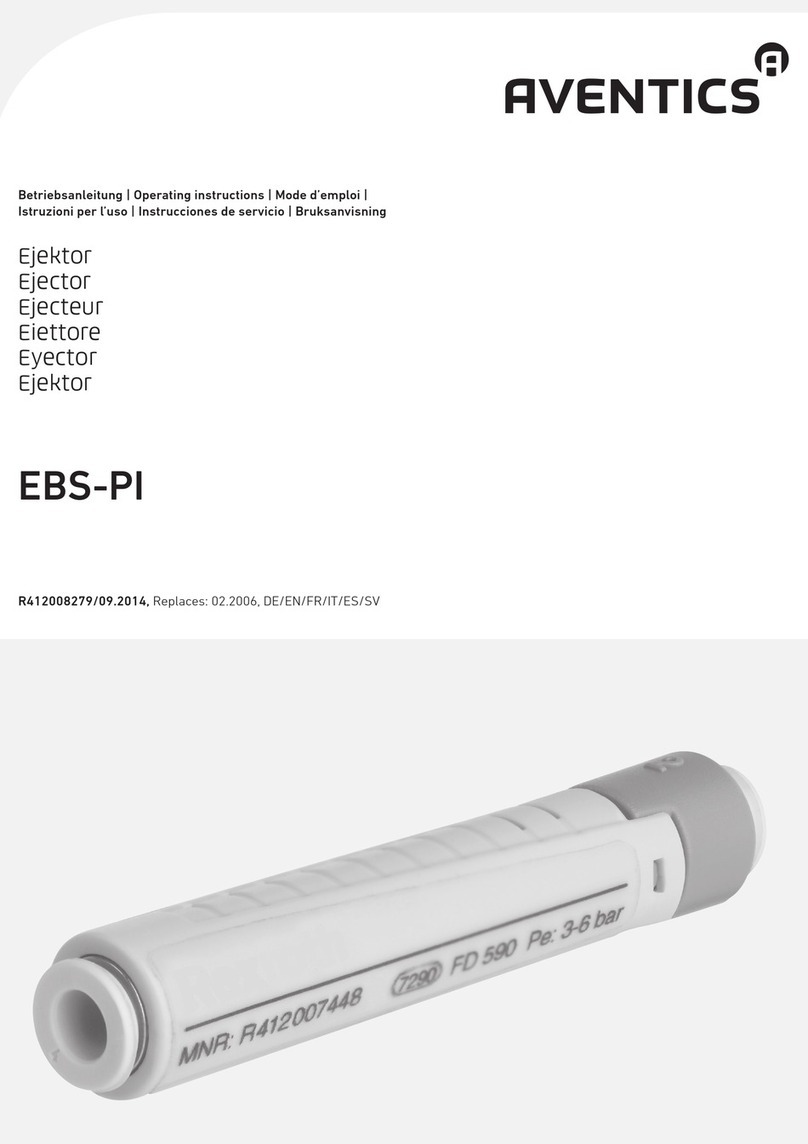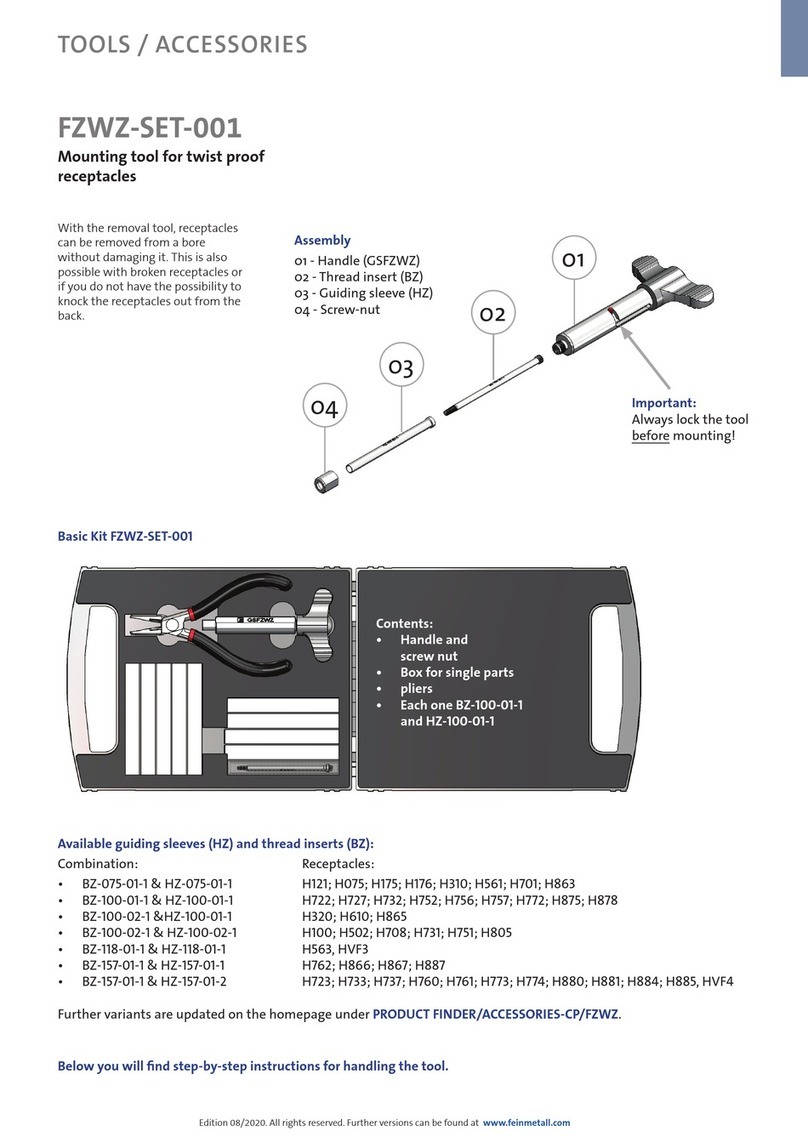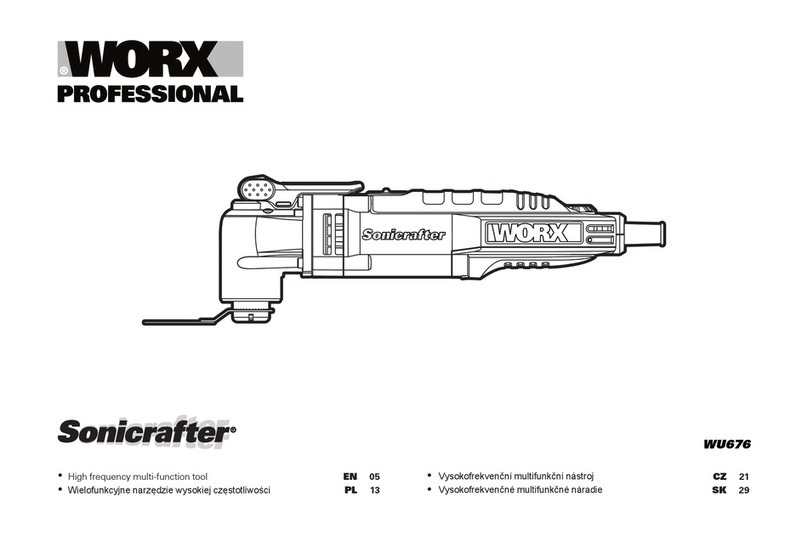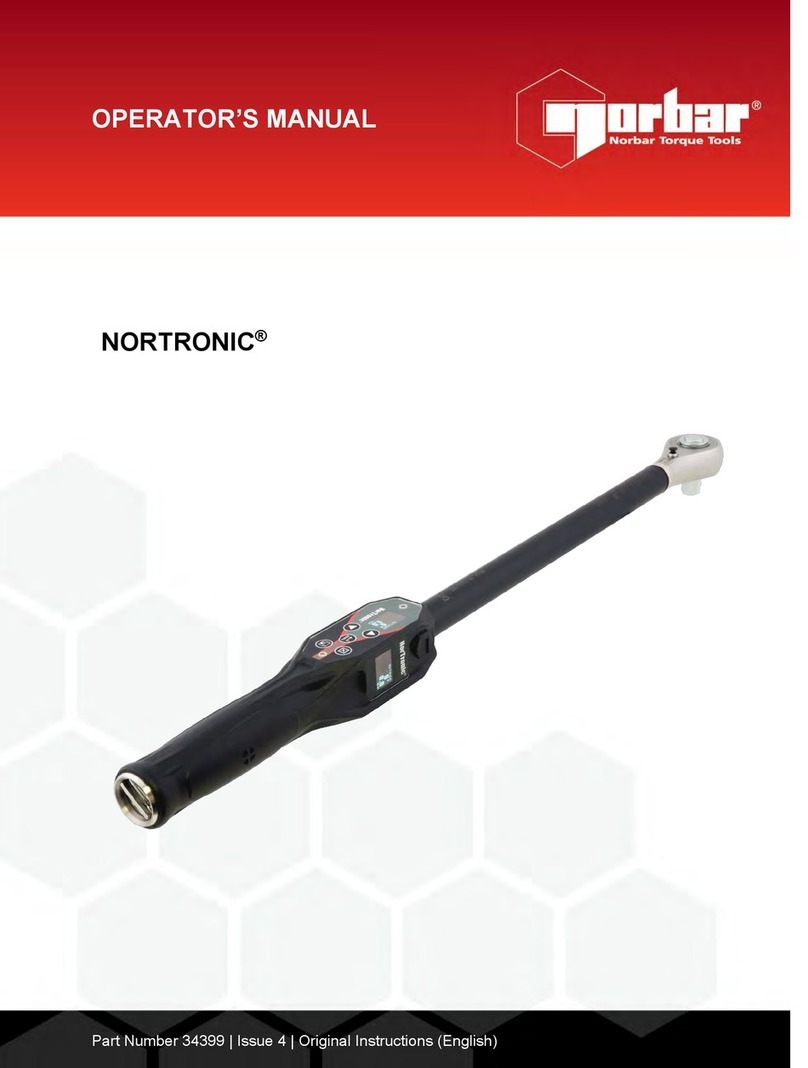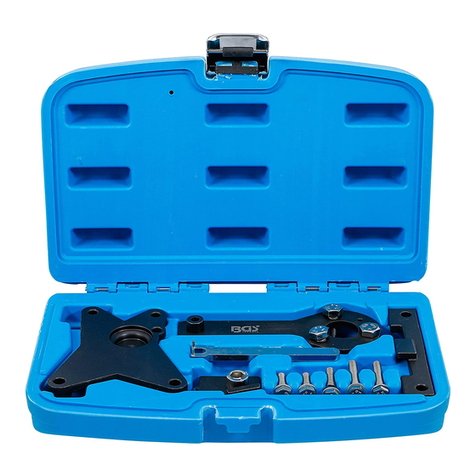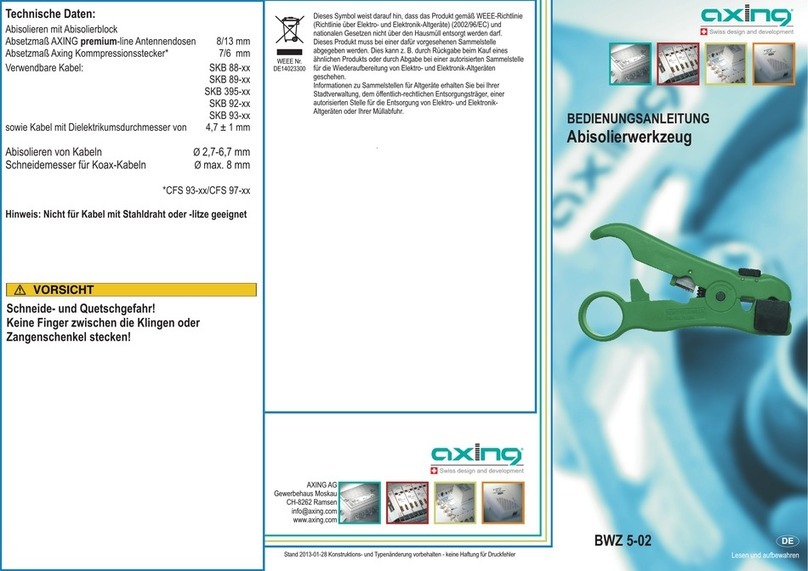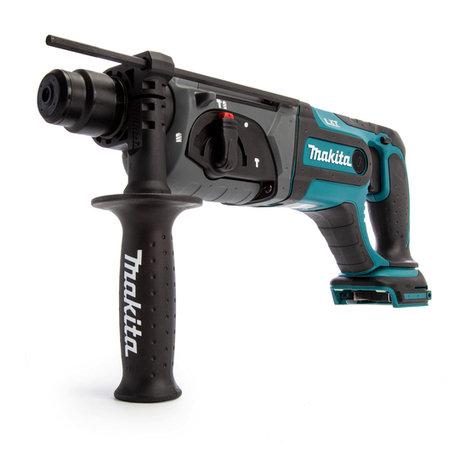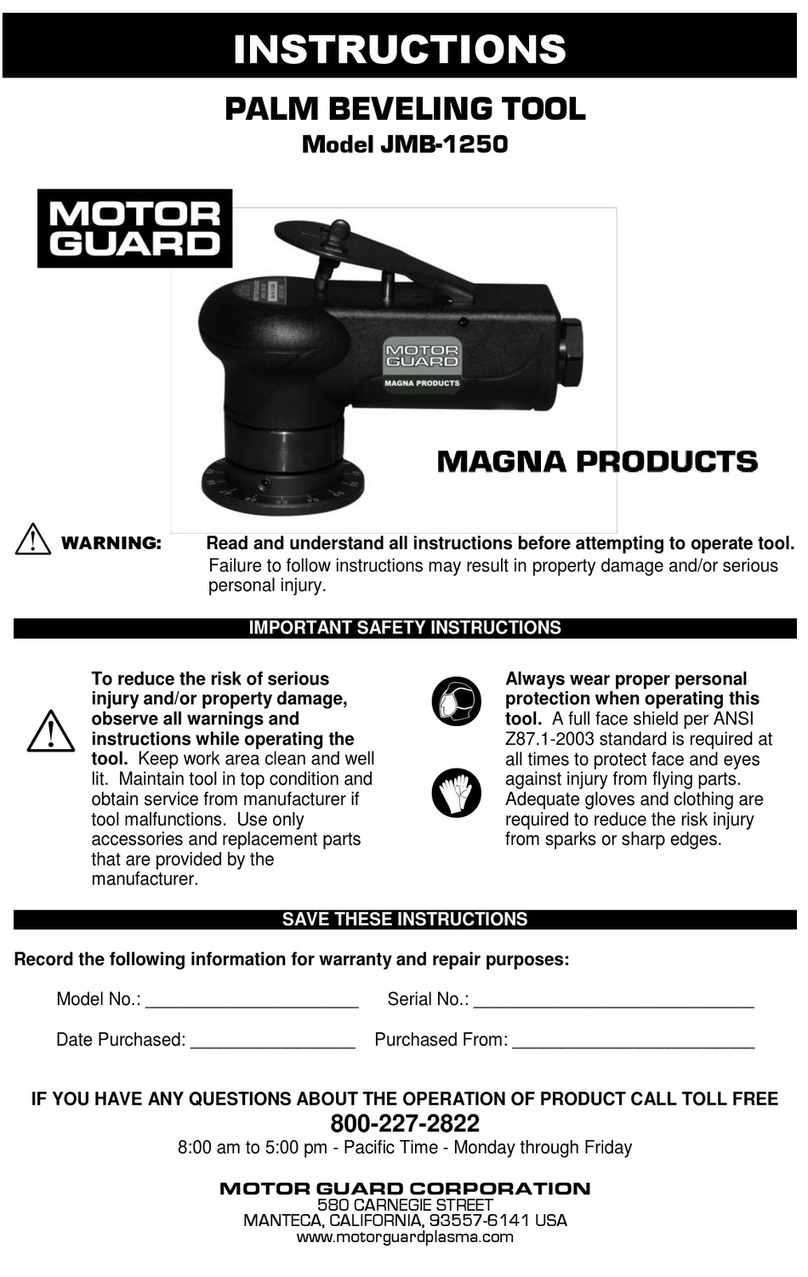
6MHD56011 - Edition 9
E
N
G
L
I
S
H
(Dwg. MHP0111)
3. HOOK LATCHES. Check operation of hook latches. Replace
if broken or missing.
4. WIRE ROPE. Lubricate if necessary. Replace the wire rope if
damaged or excessively worn. Consult the wire rope
manufacturer’s inspection information or a recognized safety
source, such as the latest edition of National Safety Council,
Accident Prevention Manual for Industrial Operations or
ASME B30.21. The following list is a users’ guide to the
accepted standards by which wire rope must be judged and is
not presented as a substitute for an experienced inspector.
a. Damage, such as bird cages, kinking, core protrusion,
crushing, heat damage, and main strand displacement.
b. Corrosion and nicking.
c. Wear of crown wires. Replace at 1/3 wear of the original
diameter of any crown wire.
d. Broken wires or strands, particularly at connections.
Replacement is necessary if one wire is broken at a
connection; twelve wires broken within one lay; four
broken wires in one strand within one lay.
5. SYNTHETIC STRAP. Strap should be clean and dry.
Remove any lubricant or dirt. Replace strap if frayed or cut.
6. WIRE ROPE/STRAP REEVING. Check reeving and ensure
wire rope or strap is properly secured to the drum. Refer to
“Installing Wire Rope” or “Installing Synthetic Strap” in
“MAINTENANCE” section.
7. HANDLE. Check for cracks, bending and other damage.
Replace if necessary.
Periodic Inspection
According to ASME B30.21, frequency of periodic inspection
depends on the severity of usage:
Disassembly may be required for HEAVY or SEVERE usage.
Keep accumulative records of periodic inspections to provide a
basis for continuing evaluation. Inspect all items in “Frequent
Inspection”. Also inspect the following:
1. FASTENERS. Check rivets, capscrews, nuts, cotter pins, and
other fasteners on hooks and puller frame. Replace if missing
and tighten or secure if loose.
2. ALL COMPONENTS. Inspect for wear, damage, distortion
and cleanliness. If external evidence indicates the need,
disassemble. Check teeth, frame, shafts, drum, sheaves,
guides, springs and covers. Replace worn or damaged parts.
Clean, lubricate and reassemble.
3. HOOKS. Inspect hooks for cracks. Use magnetic particle or
dye penetrant to check for cracks. Inspect hook retaining
parts. Tighten, repair or replace if necessary. Refer to latest
edition of ASME B30.10 (Hooks) for additional hook
inspection information.
4. DRUM AND SHEAVES. Check for excessive wear or
damage. Replace if necessary.
5. DOG MECHANISMS. Check dogs engage drum teeth.
Check holding dog pawl, driving dog pawl and drum teeth for
cracks, wear or damage. Check springs for distortion or
damage. Repair or replace parts as necessary.
6. LABELS. Check for presence and legibility. Replace if
necessary.
7. WIRE ROPE. Besides the items in a frequent inspection,
inspect for the following:
a. Build-up of dirt and corrosion. Clean if necessary.
b. Loose or damaged end connection. Replace if loose or
damaged.
c. Check wire rope anchor is secure.
d. Changes in size of the wire rope diameter. Periodically
measure diameter of wire rope from crown-to-crown
throughout life of wire rope. The actual diameter should
be recorded when wire rope is under equivalent loading
and in the same operating section. If actual diameter of
wire rope has decreased more than 1/64 in. (0.4 mm) a
thorough examination of wire rope should be conducted
by an experienced inspector to determine the suitability
of wire rope to remain in service. Refer to Dwg.
MHP0056onpage6.
(Dwg. MHP0056)
8. SYNTHETIC STRAP. Inspect material surface. Replace if
torn, cut, frayed or worn.
NORMAL HEAVY SEVERE
yearly semiannually quarterly




